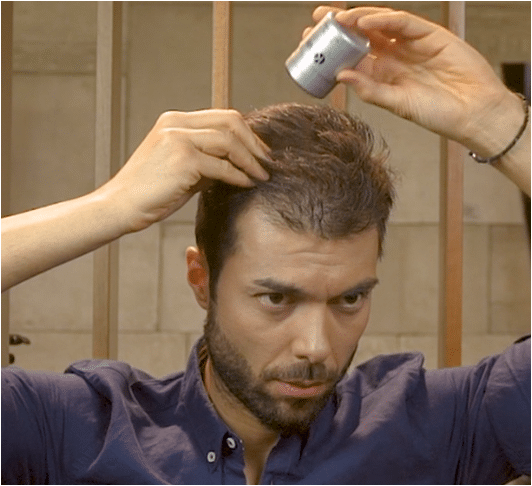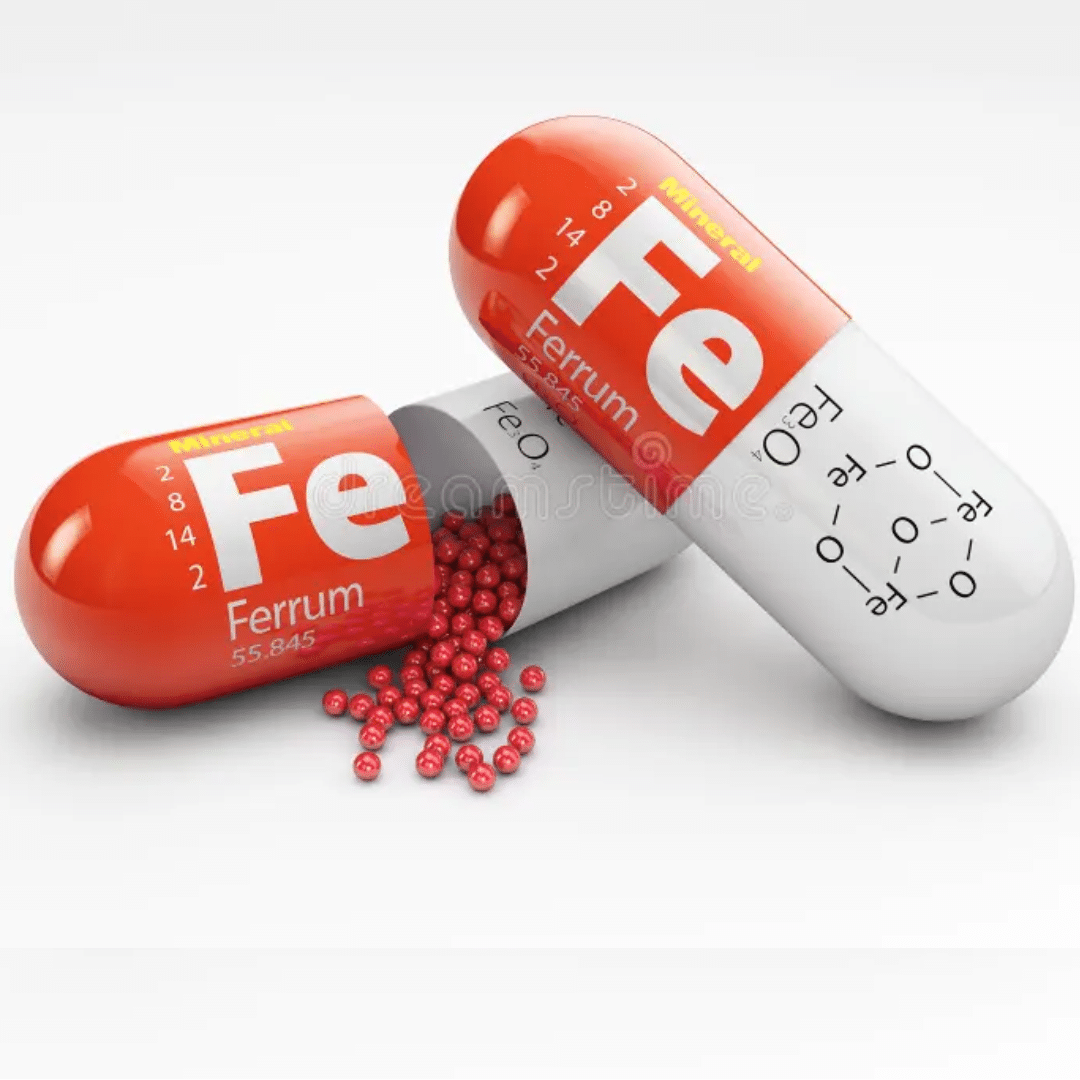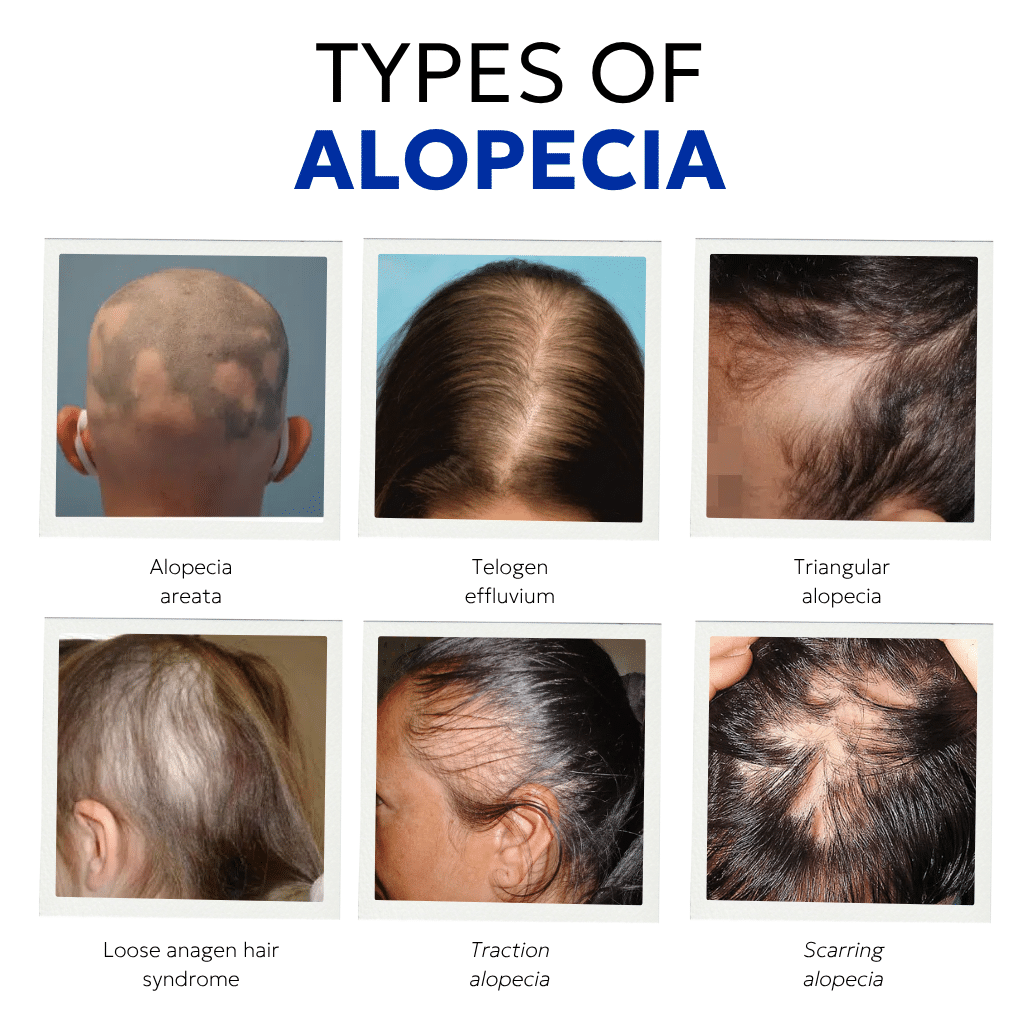Key Concepts
‣ Saw Palmetto extract (Serenoa repens) is widely used in dietary supplements for the treatment of benign prostatic hyperplasia (BPH) and to alleviate urinary tract symptoms, such as difficulty urinating. However, its actual clinical efficacy is highly debated, as it has not been shown to be superior to placebo.
‣ Its main active component, β-sitosterol, although commonly found in supplements, has demonstrated minimal potential for inhibiting the enzyme 5α-reductase in vivo. It does not reduce serum DHT levels and has been shown to increase the expression of TGF-β1 and PKC-α, both of which may promote hair follicle apoptosis and are associated with hair loss.
‣ On the other hand, the unsaturated fatty acids contained in Saw Palmetto extract—such as lauric, myristic, oleic, and linoleic acid—may exhibit anti-androgenic properties when used topically, which is relevant in the context of treating hair loss.
What Is Saw Palmetto?
Saw Palmetto (also known as Serenoa repens, Serenoa serrulata, or Sabal serrulatum) is a species of dwarf palm widely used in dietary supplements, primarily for benign prostatic hyperplasia (BPH) and increasingly for supporting hair health. It thrives in the West Indies and along the southern coastal regions of the United States.
The extract is derived from the fruit and seeds of the plant and is widely available in supplement form, both in physical stores and through online retailers.
Chemical Composition of Saw Palmetto Extract
Saw Palmetto extract contains a high concentration (over 90%) of fatty acids, both in free and esterified forms. It is composed of approximately 35% oleic acid, 30% lauric acid, 11% myristic acid, and 5% linoleic acid, along with smaller amounts of other free fatty acids (FFAs).
The extract also contains phytosterols such as β-sitosterol, stigmasterol, cycloartenol, lupeol, lupenone, and methylcloartenol.
Uses of Saw Palmetto
The use of Saw Palmetto as a dietary supplement for alleviating symptoms of benign prostatic hyperplasia (BPH) has been documented in medical literature since the 19th century. Traditionally, the plant’s berries were used both as food and as a natural remedy for digestive issues, urological problems, urinary tract symptoms, and even to enhance libido.
The evaluation of Saw Palmetto’s effectiveness—whether for urinary tract conditions or for treating hair loss—can vary depending on the form, dosage, and method of administration.
Although it is a natural ingredient with a long history of use, it is important to consult your healthcare provider before taking any dietary supplement, as clinical evidence supporting its efficacy remains limited.
Proper Dosage of Saw Palmetto
Saw Palmetto is typically administered orally at a dosage of 320 mg daily, divided into two or three doses, for the treatment of benign prostatic hyperplasia (BPH). Dosages up to 480 mg daily for six months have not demonstrated increased effectiveness.
At the 320 mg dosage, Saw Palmetto has shown mild estrogenic activity in men without causing gynecomastia. Across comparative studies, the incidence of adverse effects leading to treatment discontinuation among BPH patients was 7% for placebo, 9% for Saw Palmetto, and 11% for Finasteride.
Possible Side Effects of Saw Palmetto
Side effects from oral intake of Saw Palmetto are generally rare, mild, and comparable to those of a placebo. The most common adverse effects include mild gastrointestinal disturbances such as epigastric pain, diarrhea, nausea, as well as fatigue, headache, decreased libido, and rhinitis. These side effects may be alleviated by taking the supplement with food, are generally infrequent, and reversible upon discontinuation of treatment. No significant drug interactions have been reported, although there is a theoretical possibility of interaction with hormone replacement therapies, for which no clinical evidence currently exists.
Is Saw Palmetto Safe?
Overall, Saw Palmetto is considered safe and has not been found to be teratogenic or mutagenic in animal studies, even at doses of 2 g/kg body weight. Additionally, it does not adversely affect liver function tests in either animals or humans. Furthermore, since Saw Palmetto does not reduce PSA levels, there is no concern about the potential masking of prostate malignancies.
Mechanism of Action of Saw Palmetto: What Do We Know So Far?
The exact mechanism of action of Saw Palmetto extract (Serenoa repens) remains not fully understood. Various in vitro studies have shown that it can non-competitively inhibit both isoforms of the enzyme 5α-reductase (5α-R) in cultured human foreskin fibroblasts. Additionally, it competitively inhibits androgen binding to androgen receptors in cultured mouse prostate cells and suppresses the proliferation of prostate cell cultures on an epidermal growth factor (EGF) substrate, as EGF secretion is the pathway through which DHT induces benign prostatic hyperplasia.
It has also been proposed that Saw Palmetto acts as an indirect α-blocker by occupying α1-adrenergic receptors in the prostate, and it has been attributed anti-inflammatory properties relevant to the treatment of urinary tract inflammation.
However, these properties of the lipid-sterolic extract of Saw Palmetto (Serenoa) have only been observed in vitro. The most likely in vivo mechanism of action is a weak, non-competitive inhibition of 5α-reductase, mediated through changes it induces in the enzyme’s environment rather than at its active site.
It is noteworthy that 5α-reductase is located on the surface of the cell membrane, and its activity is influenced by the integrity of the cell membrane.
Effectiveness of Saw Palmetto in Benign Prostatic Hyperplasia (BPH)
Saw Palmetto has been shown to act locally on the periurethral portion of the prostate, resulting in urethral decompression without causing a general reduction in prostate size. In a six-month double-blind study by Carraro et al., involving 1,098 patients, it was demonstrated that Saw Palmetto reduced the total size of the hypertrophic prostate by only 6%, a change of minimal clinical significance.
The overall effectiveness of Saw Palmetto in alleviating BPH symptoms, regardless of its mechanism of action, is modest. However, many patients report experiencing relief in urinary symptoms.
Variability in the Composition of Commercial Formulations
As mentioned in the introduction, commercially available botanical products vary significantly in their content and concentration of active ingredients. This largely depends on the plant’s geographical origin, harvesting season, the parts of the plant used, the type of extract (aqueous, alcoholic, glycerin), as well as the specific forms of the compounds present.
Consequently, notable differences have been observed in the clinical trial outcomes of these heterogeneous products, even when they contain the same botanical species. Habib et al. reported significant variations in the constituents of 14 different Saw Palmetto extract types analyzed.
The concentrations of fatty acids, methyl- and ethyl-esters, long-chain esters, and glycerides differed substantially and likely impacted the clinical efficacy and safety of the extracts. For this reason, there is a clear need for thorough analysis, evaluation, and standardization of extracts, despite their common botanical origin.
Studies on Saw Palmetto Products
An analysis conducted by the U.S. National Consumer Laboratory on 27 different Saw Palmetto products revealed deviations from the labeled concentration of up to -95%, with only 17 products exceeding the minimally acceptable concentration of 85% by volume.
In a study published in the peer-reviewed medical journal The Journal of Urology in 2002, six randomly selected Saw Palmetto products were analyzed. Three contained only 5-10% of the amount stated on their labels, one contained 80%, while the remaining two contained +25% and +140% more than the labeled amount.
Another study comparing seven different Saw Palmetto formulations with identical labeled dosages reported significant qualitative and quantitative variations—even among tablets from the same packaging.
Numerous studies have investigated the efficacy of Saw Palmetto in patients with benign prostatic hyperplasia (BPH), with some reporting positive outcomes. However, according to the Natural Standard Research Collaboration, most of these studies lack reliability, and the Cochrane Database concludes that Saw Palmetto does not outperform placebo in any parameter except for maximum urinary flow.
None of the clinical trials to date meet the criteria set by the “International Committee for BPH” regarding therapeutic guidelines for the condition. The majority of these studies have small sample sizes, short durations, lack control groups, and utilize non-standardized extracts.
Among the extensive body of research, only one 12-month double-blind study published in the New England Journal of Medicine by Bent et al. adheres to rigorous research protocols and reports that Saw Palmetto’s efficacy is comparable to that of placebo.
Saw Palmetto and Androgenetic Alopecia
Saw Palmetto is the most popular herbal remedy for addressing hair loss and androgenetic alopecia. However, while its efficacy in symptom relief for benign prostatic hyperplasia (BPH) has been partially empirically shown to be comparable to placebo, its ability to inhibit the 5α-reductase enzyme has been strongly questioned. Unfortunately, this enzymatic inhibition is the only mechanism potentially relevant to patients suffering from androgenetic alopecia.
Specifically, only two studies published in 1984 in the same issue of the Journal of Steroid Biochemistry by two research teams with similar methodologies appeared to demonstrate an inhibitory effect of Saw Palmetto on 5α-reductase in vitro.
However, these studies used exceptionally high concentrations of Saw Palmetto, which are neither achievable in vivo nor physiologically relevant. It is also highly likely that the observed inhibition was due to non-specific chemical interactions between the enzyme and the solvent carrying the highly concentrated Saw Palmetto extract.
Comparison with Finasteride – Quantitative Data
The table below presents the required concentration values of each extract compared to Finasteride to achieve approximately IC50 inhibition of 5α-reductase (Table 1). The IC50 (half maximal inhibitory concentration) is a measure of potency, indicating the amount of a chemical substance needed to inhibit a biological process by 50%.

The above study found that in order for Saw Palmetto, in the form of the commercial preparation Permixon®—which is the most potent—to produce an in vivo inhibition of 5α-reductase comparable to that of 5 mg Finasteride, a required active dose of 28,000 mg per day (5600 mg x 5) would be necessary. This indicates that Saw Palmetto is an extremely weak inhibitor of the enzyme. Considering that the dosage of Permixon used for symptomatic relief in patients with benign prostatic hyperplasia (BPH) is only 320 mg, it can be concluded that Saw Palmetto does not exert its effects on BPH through inhibition of the 5α-reductase enzyme.
Marks et al. Study (2001) – Human Analysis
The above conclusions were confirmed by the publication of Marks et al. in 2001, who investigated the effects of Saw Palmetto on human prostate tissue, along with measurements of serum androgens. The study found that Saw Palmetto:
- Does not reduce serum DHT levels,
- Does not increase serum testosterone (which would indicate a reduction in DHT favoring testosterone),
- Does not affect PSA levels.
At the microscopic level within the prostate, Saw Palmetto was found to reduce DHT by 32–50% while increasing testosterone by 125%. This suggests a weak inhibitory effect of Saw Palmetto on the 5α-reductase enzyme, but only locally within the prostate tissue.
The table below summarizes the overall effects of Saw Palmetto compared to Finasteride (Table 2).
The Only Study on Saw Palmetto and Androgenetic Alopecia (2012)
It is worth noting that the only published study linking Saw Palmetto to androgenetic alopecia up to 2012 appeared in the Journal of Alternative and Complementary Medicine. The study reported that 6 out of 10 patients experienced improvement in the appearance of androgenetic alopecia. However, the findings of this study are highly questionable for several significant reasons:
- Although described as randomized and double-blind, the sample size was very small, with only ten patients in the placebo group and ten in the treatment group.
- The extract administered to patients did not contain solely Saw Palmetto or β-sitosterol but included several additional substances potentially beneficial to hair follicles (biotin, inositol, niacin, lecithin).
- The evaluation period varied among patients, with some assessed at 18 weeks and others at 24 weeks.
- Most importantly, the assessments by both researchers and patients were subjective, as no objective hair measurement methods were used. Instead, the study relied on patient satisfaction and their personal impression of hair improvement.

b-Sitosterol and Androgenetic Alopecia
The compound b-sitosterol, often examined and considered by some authors to have an active role in treating androgenetic alopecia, was shown in a 2002 study published in the reputable Journal of Steroid Biochemistry & Molecular Biology to have no inhibitory effect on the enzyme 5α-reductase. In contrast, other components of the Saw Palmetto extract—such as myristic acid, lauric acid, and oleic acid—were found to be moderate inhibitors of both types of 5α-reductase in vitro, with the exception of palmitic acid. Additionally, lauric acid, which naturally occurs in sebum at concentrations of 1-2%, has demonstrated significant antimicrobial properties against Propionibacterium acnes, exhibiting stronger activity than all other free fatty acids tested.
Ineffectiveness of b-Sitosterol
The ineffectiveness of b-sitosterol as an inhibitor of the 5α-reductase enzyme has been demonstrated previously. Moreover, it does not possess anti-edema or anti-inflammatory properties as was once suggested. On the contrary, Kassen et al. reported that β-sitosterol increases the expression of TGF-β1 and PKC-α, both of which have a negative impact on hair follicles, potentially inducing apoptosis in these follicles.
Positive Findings on the Action of b-Sitosterol
There have also been positive reports regarding the effects of β-sitosterol. In a small-scale study presented at the 4th Intercontinental Meeting of Hair Research Societies in Berlin in 2004, 34 men and 28 women (aged 18–48) received topical treatment with a lotion containing β-sitosterol for three months. The study reported a 35% increase in hair density, measured by phototrichogram, and a 67% reduction in sebum secretion, assessed via sebometry. However, the study lacked a control group and had a short duration. Additionally, a recent publication by Tosti et al. noted that the shampoo Ketoil® (containing 0.5% ketoconazole, Saw Palmetto, and taurine) demonstrated superior results in treating dandruff compared to a standard 1% ketoconazole shampoo.
Finasteride and Androgenetic Alopecia
The most significant study published on the effects of Saw Palmetto is by Rossi et al., which lasted 24 months and was completed in December 2012. The research team directly compared the effects of Finasteride 1 mg and Saw Palmetto 320 mg in 100 men with androgenetic alopecia, divided into two groups of 50. Global photographs were taken before treatment (T0), during treatment (T3, 6, 9, 12, 15, 18, 21 months), and at the study’s conclusion (T24).
At the end of the study, 38% of patients treated with Saw Palmetto showed slight improvement in hair appearance, compared to 68% in the Finasteride group, which also exhibited a significantly higher improvement score (p < 0.005).
Furthermore, Finasteride was significantly more effective (p < 0.001) in patients at Norwood-Hamilton stages II–III, improving the appearance of the frontal scalp and hairline, whereas Saw Palmetto demonstrated limited efficacy only on the vertex area.
Although the study had some limitations—lacking a placebo control group, no hair weight measurements, and no crossover between groups—it confirmed the effectiveness of Finasteride and demonstrated in a substantial patient cohort that Saw Palmetto, while possessing some hair growth potential, cannot be compared to Finasteride in terms of efficacy.
Does Saw Palmetto Really Work Against Androgenetic Alopecia, and to What Extent?
Based on the above, it can be concluded that the efficacy of Saw Palmetto in treating androgenetic alopecia is limited. Unlike Finasteride, Saw Palmetto does not reduce serum DHT levels, and the free fatty acids it contains do not act systemically as inhibitors of the 5α-reductase enzymatic system. Overall, Saw Palmetto may function essentially as a placebo treatment for androgenetic alopecia.
Moreover, since β-sitosterol has been shown to increase the expression of TGF-β1 and PKC-α—both factors that may negatively impact hair follicles in individuals with androgenetic alopecia—its use might even have adverse effects. Oral administration of Saw Palmetto is generally considered safe; however, the b.i.d. or t.i.d. dosing schedule can reduce patient adherence.
Despite its popularity, Saw Palmetto is not recommended for the treatment of androgenetic alopecia, especially when compared to the gold standard Finasteride.
Source:
Konstantinos Anastasakis MD, PhD, “Androgenetic Alopecia from A to Z,” Nutritional Supplements and Androgenetic Alopecia, pp. 432–436, 2nd Edition, Zevelekakis Publications, Athens, 2017












